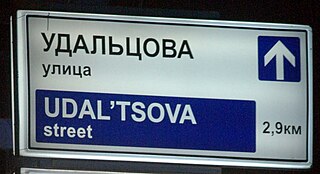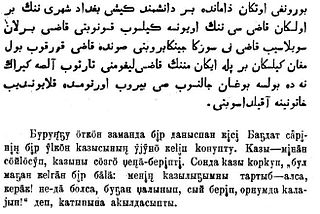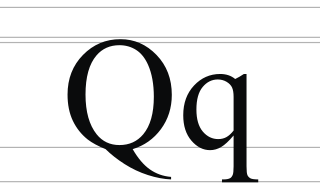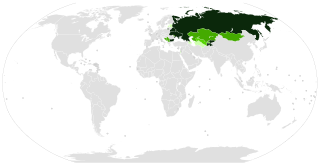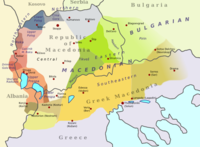| Letter | Name | Notes |
|---|
| А̀ а̀ | A with grave | Bulgarian, Macedonian (not individual letter, used in Dialects) |
| А̂ а̂ | A with circumflex | Bulgarian, Serbian (not individual letter, used in Dialects), Udege |
| Ӑ ӑ | A with breve | Chuvash |
| Ӓ ӓ | A with diaerisis | Hill Mari, Kildin Sami, Khanty, Serbian (not individual letter, used in Dialects) |
| А̄ а̄ | A with macron | Kildin Sami, Khanty, Bulgarian (not individual letter, used in Dialects), Serbian (not individual letter, used in Dialects) |
| А̃ а̃ | A with tilde | Khinalug |
| А̊ а̊ | A with ring above | Selkup |
| Ӓ̄ ӓ̄ | A with diaeresis and macron | Kildin Sami |
| Ә́ ә́ | Schwa with acute | Tatar (not individual letter) |
| Ӛ ӛ | Schwa with diaeresis | Khanty |
| Ә̃ ә̃ | Schwa with tilde | Khinalug |
| В̌ в̌ | Ve with caron | Shughni, Wakhi |
| В҄ в҄ | Ve with Scribble | Church Slavonic |
| Ґ ґ | Ghe with upturn | Ukrainian, Belarusian (i.e. Belarusian Classical Orthography), (not individual letter, formally), Rusyn |
| Г̄ г̄ | Ghe with macron | Karelian (1820s) |
| Г̌ г̌ | Ghe with caron | Shughni, Wakhi |
| Г̑ г̑ | Ghe with inverted breve | Aleut |
| Ғ ғ | Ghe with stroke | Kazakh, Uzbek, Bashkir, Tajik, Azerbaijani (to 1991) |
| Ӻ ӻ | Ghe with stroke and hook | Nivkh [2] |
| Ғ̌ ғ̌ | Ghe with stroke and caron | Shughni |
| Г̣ г̣ | Ghe with dot below | Cyrillization of Arabic |
| Ҕ ҕ | Ghe with middle hook | Abkhaz, Yakut |
| Ӷ ӷ | Ghe with descender | Abkhaz, Aleut |
| Г̧ г̧ | Ghe with cedilla | Karelian (1820's), Lezgian, Dargwa, Chechen (Uslar's orthographies) |
| Г҄ г҄ | Ge with scribble | Church Slavonic |
| Д̆ д̆ | De with breve | Aleut |
| Д̣ д̣ | De with dot below | Cyrillization of Arabic, Wakhi |
| Ѓ ѓ | Gje | Macedonian |
| Ѐ ѐ | Ye with grave | Macedonian, Bulgarian, Serbian, Church Slavonic |
| Ӗ ӗ | Ye with breve | Chuvash |
| Ё̄ ё̄ | Yo with macron | Khanty |
| Е̄ е̄ | Ye with macron | Khanty, Bulgarian, Serbian |
| Е̃ е̃ | Ye with tilde | Khinalug |
| Є̈ є̈ | Ukrainian Ye with diaeresis | Khanty |
| Ӂ ӂ | Zhe with breve | Moldavian |
| Ӝ ӝ | Zhe with diaeresis | Udmurt |
| Җ җ | Zhe with descender | Dungan, Tatar, Turkmen |
| З́ з́ | Zje | Montenegrin |
| Ӟ ӟ | Ze with diaeresis | Udmurt |
| Ҙ ҙ | Ze with descender | Bashkir, Wakhi |
| З̌ з̌ | Ze with caron | Nganasan, Shughni |
| З̱ з̠ | Ze with macron below | Cyrillization of Arabic |
| З̣ з̣ | Ze with dot below | Cyrillization of Arabic |
| Ԑ̈ ԑ̈ | Reversed Ze with diaeresis | Khanty |
| Ѝ ѝ | I with grave | Bulgarian, Macedonian, Serbian |
| Ҋ ҋ | Short I with tail | Kildin Sami |
| Ӥ ӥ | I with diaeresis | Udmurt |
| Ӣ ӣ | I with macron | Tajik, Bulgarian, Serbian |
| И̃ и̃ | I with tilde | Khinalug, Godoberi |
| Ї ї | Yi | Ukrainian, Rusyn, Church Slavonic (almost) |
| Ї́ ї́ | Yi with acute | Ukrainian, Rusyn |
| Ӄ ӄ | Ka with hook | Aleut, Khanty, Abkhaz (formally) |
| Ҟ ҟ | Ka with stroke | Abkhaz |
| Ҝ ҝ | Ka with vertical stroke | Azerbaijani |
| К҄ к҄ | Ka with scribble | Church Slavonic |
| Ԟ ԟ | Aleut Ka | Aleut [1] |
| Қ қ | Ka with descender | Abkhaz, Kazakh, Khanty, Wakhi |
| Ҡ ҡ | Bashkir Qa | Bashkir |
| К̣ к̣ | Ka with dot below | Cyrillization of Arabic |
| Ԓ ԓ | El with hook | Chukchi, Khanty, Itelmen [2] |
| Ԡ ԡ | El with middle hook | Chuvash (1872) [1] |
| Ԯ ԯ | El with descender | Khanty [1] |
| Ӆ ӆ | El with tail | Kildin Sami |
| Ӎ ӎ | Em with tail | Kildin Sami |
| Ӈ ӈ | En with hook | Aleut, Kildin Sami, Khanty, Nenets |
| Н҄ н҄ | En with scribble | Church Slavonic |
| Ԣ ԣ | En with middle hook | Chuvash (1872), [1] Udmurt (to 1897) |
| Ԩ ԩ | En with left hook | Orok [7] |
| Ң ң | En with descender | Dungan, Kazakh, Tatar, Turkmen, Bashkir, Khakasian, Khanty, Uzbek, Kyrgyz |
| Ӊ ӊ | En with tail | Kildin Sami |
| О̀ о̀ | O with grave | Bulgarian, Serbian, Macedonian |
| О̄ о̄ | O with macron | Carpatho-Rusyn |
| Ӧ ӧ | O with diaeresis | Hill Mari, Meadow Mari, Khakas, Khanty, Udmurt |
| О̆ о̆ | O with breve | Itelmen, Khanty |
| О̂ о̂ | O with circumflex | Udege, Rusyn, Bulgarian |
| О̃ о̃ | O with tilde | Khinalug |
| Ӧ̄ ӧ̄ | O with diaeresis and macron | |
| Ө́ ө́ | Barred O/Oe with acute | Bashkir (not individual letter) |
| Ӫ ӫ | Barred O/Oe with diaeresis | Khanty |
| Ө̄ ө̄ | Barred O/Oe with macron | Negidal, Orok, Selkup |
| Ө̆ ө̆ | Barred O/Oe with breve | Khanty |
| Ҧ ҧ | Pe with middle hook | Old orthographies for Abkhaz |
| Ԥ ԥ | Pe with descender | Abkhaz [8] |
| Р̌ р̌ | Er with caron | Nivkh, Polish (formerly) |
| Ҏ ҏ | Er with tick | Kildin Sami |
| С́ с́ | Sje | Montenegrin |
| Ҫ ҫ | Es with descender (The) | Bashkir, Chuvash, Nganasan |
| С̱ с̠ | Es with macron below | Cyrillization of Arabic |
| С̣ с̣ | Es with dot below | Cyrillization of Arabic |
| Ꚋ ꚋ | Te with middle hook | Abkhaz (1909—1926), Chuvash (1872) [1] |
| Т̌ т̌ | Te with caron | Chuvash (1872), Shughni, Wakhi |
| Ҭ ҭ | Te with descender | Abkhaz [8] |
| Т̣ т̣ | Te with dot below | Cyrillization of Arabic |
| Ќ ќ | Kje | Macedonian |
| У̀ у̀ | U with grave | Bulgarian (not individual letter, used in Dialects) |
| У́ у́ | U with acute | Russian, Karachay-Balkar (formerly) |
| Ӳ ӳ | U with double acute | Chuvash |
| Ў ў | Short U | Belarusian, Dungan, Khanty, Uzbek |
| Ӱ ӱ | U with diaeresis | Hill Mari, Meadow Mari, Khakas, Khanty, Rusyn |
| Ӯ ӯ | U with macron | Carpatho-Rusyn (not individual letter), Tajik |
| У̃ у̃ | U with tilde | Khinalug |
| Ӱ́ ӱ́ | U with diaeresis and acute | Rusyn |
| Ұ ұ | Straight U/Ue with stroke (Kazakh Short U) | Kazakh |
| Ү́ ү́ | Straight U/Ue with acute | Mongolian (not individual letter) |
| Х̑ х̑ | Kha with inverted breve | Aleut |
| Ӽ ӽ | Kha with hook | Aleut, Nivkh, Itelmen, [2] Khanty, Abkhaz (formerly) |
| Х҄ х҄ | Kha with scribble | Church Slavonic |
| Ӿ ӿ | Kha with stroke | Nivkh [2] |
| Ҳ ҳ | Kha with descender | Abkhaz, Khanty, Tajik, Uzbek, Wakhi |
| Х̱ х̠ | Kha with macron below | Cyrillization of Arabic |
| Х̣ х̣ | Kha with dot below | Cyrillization of Arabic |
| Х̮ х̮ | Kha with breve below | Cyrillization of Arabic |
| Ѽ ѽ | Omega | Slavic languages (Historic) [3] |
| Ԧ ԧ | Shha with descender | Azerbaijani Cyrillic (1939-1991) [9] |
| Ӵ ӵ | Che with diaeresis | Udmurt |
| Ҹ ҹ | Che with vertical stroke | Azerbaijani |
| Ҷ ҷ | Che with descender | Abkhaz, Khanty, Tajik, Wakhi |
| Ҷ̣ ҷ̣ | Che with descender and dot below | Wakhi |
| Ӌ ӌ | Khakassian Che | Khakas |
| Ҿ ҿ | Abkhazian Che with descender | Abkhaz |
| Ш̆ ш̆ | Sha with breve | Abkhaz language (Old) |
| Ъ̀ ъ̀ | Hard sign with grave | Bulgarian (not individual letter) |
| Ꙑ ꙑ | Yery with back yer | Old Church Slavonic, [3] now Ы |
| Ы̆ ы̆ | Yery with breve | Moksha (1923-1938), Mari (old) |
| Ӹ ӹ | Yery with diaeresis | Hill Mari, Northwestern Mari |
| Ы̄ ы̄ | Yery with macron | Aleut (Bering dialect), [10] Evenki, Mansi, Nanai, Negidal, Ulch, Selkup |
| Ы̂ ы̂ | Yery with circumflex | Udege (formerly) |
| Ы̃ ы̃ | Yery with tilde | Moksha (1890s) |
| Ҍ ҍ | Semisoft Sign | Kildin Sami |
| Э̄ э̄ | E with macron | Aleut (Bering dialect), [10] Evenki, Mansi, Nanai, Negidal, Orok, Ulch, Kildin Sami, Selkup, Chechen |
| Ӭ ӭ | E with diaeresis | Kildin Sami |
| Э̆ э̆ | E with breve | Tundra Nenets |
| Ӭ́ ӭ́ | E with diaeresis and acute | Kildin Sami |
| Ӭ̄ ӭ̄ | E with diaeresis and macron | Kildin Sami |
| Э̇ э̇ | E with dot above | Tundra Nenets |
| Ю̀ ю̀ | Yu with grave | Bulgarian (not individual letter, used in Dialects) |
| Ю̆ ю̆ | Yu with breve | Khanty |
| Ю̈ ю̈ | Yu with diaeresis | Selkup, Karelian (formerly) |
| Ю̈́ ю̈́ | Yu with diaeresis and acute | Rusyn |
| Ю̄ ю̄ | Yu with macron | Aleut (Bering dialect), [10] Evenki, Mansi, Nanai, Negidal, Orok, Ulch, Kildin Sami, Selkup, Chechen |
| Ю̂ ю̂ | Yu with circumflex | Udege (formerly) |
| Я̀ я̀ | Ya with grave | Bulgarian (not individual letter, used in Dialects) |
| Я̆ я̆ | Ya with breve | Khanty |
| Я̈ я̈ | Ya with diaeresis | Selkup |
| Я̄ я̄ | Ya with macron | Kildin Sami, Udege (formerly) |
| Я̂ я̂ | Ya with circumflex | Udege (formerly) |
| Ѷ ѷ | Izhitsa with kendema | (New) Church Slavonic |




